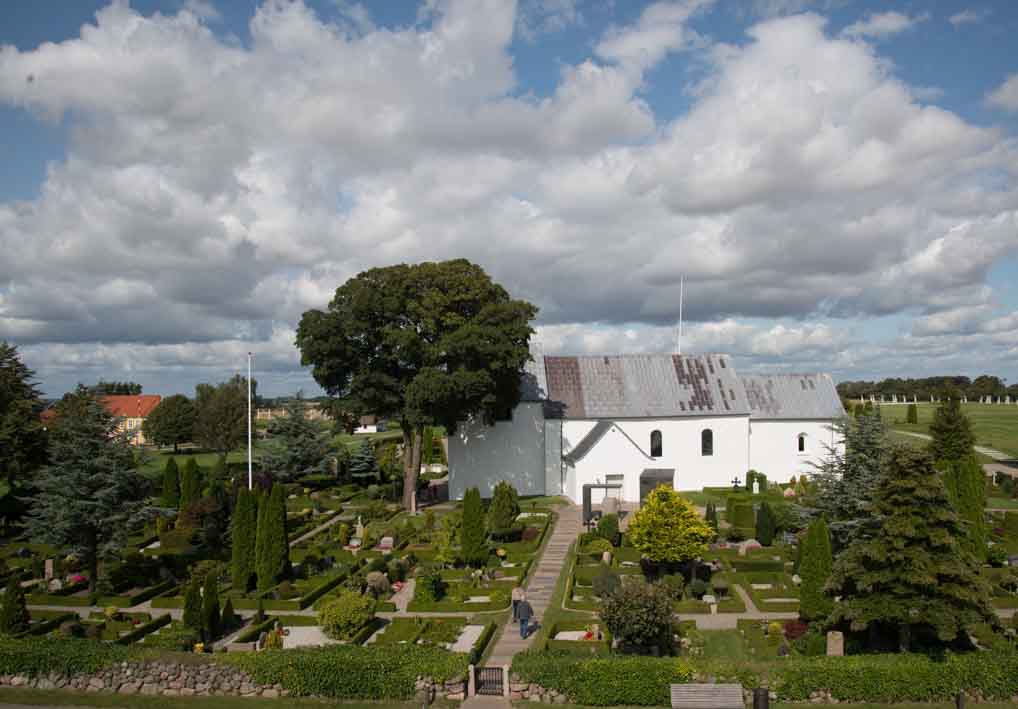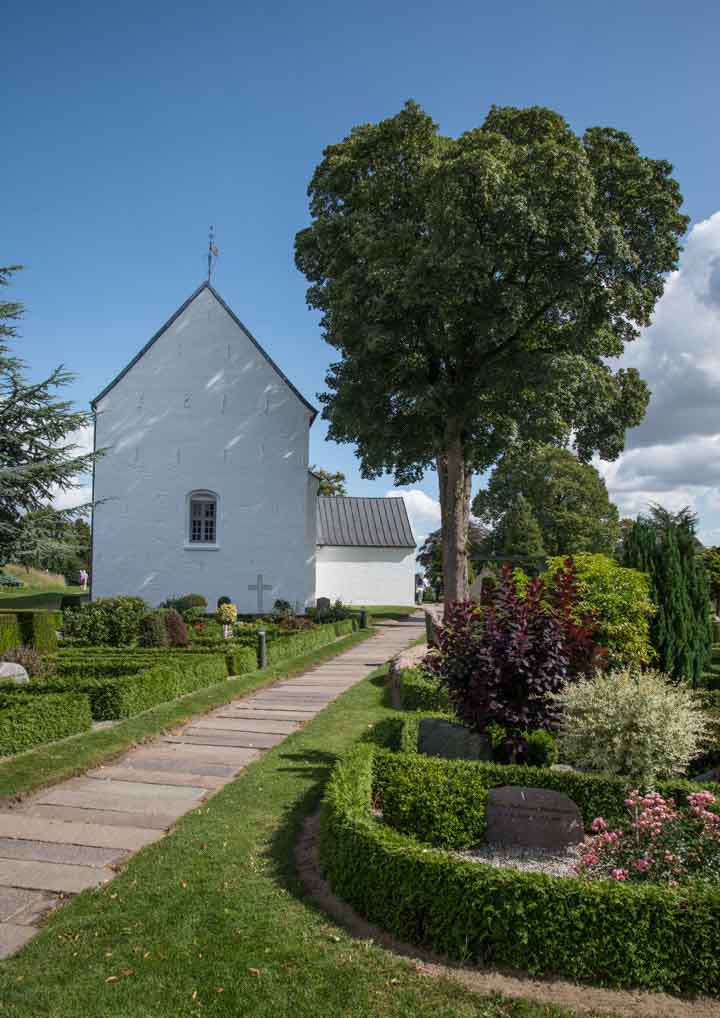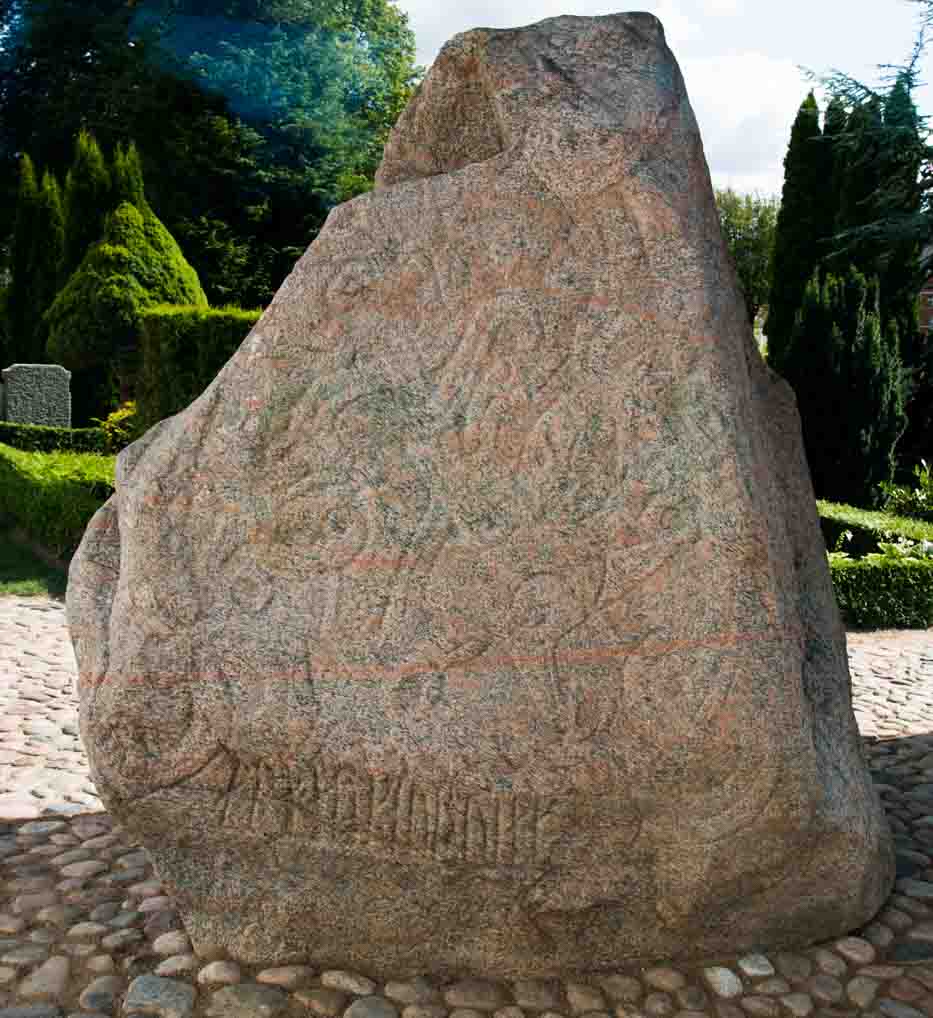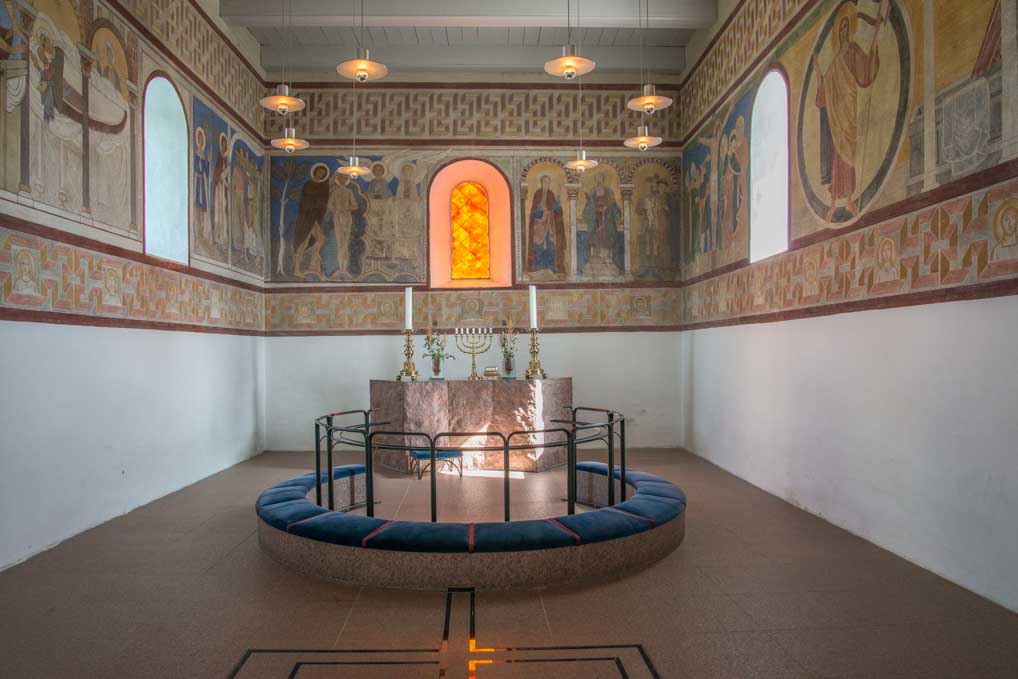Today we left the the island of Zealand (I’ve been spelling it Zeeland, incorrectly), made another epic bridge journey to the island of Funen and skipped right on over a much smaller bridge to the European mainland and the part of Denmark known as Jutland. We were heading for what many Danes consider the birthplace of their nation: Jelling.
The bridges linking Zealand and Funen are monsters. First you travel over a 6.5 km suspension bridge to an island in the middle of the sea and then another 6.5 km over a more standard looking box girder bridge. Motorhomes are encouraged, by a sign, to go to the manual pay booth. After we had committed to that lane we noticed many others going to the credit card automatic booths.
The different price points for motorhomes is under 6 metres; over 6 metres and under 3,500 kg and over 3,500 kg. The price differences are large: €34, €51 and €100 or their Danish equivalents, respectively. Anyone following in our footsteps will have to search their conscience as to whether they declare their full length and/or weight with big savings possible for those with a malleable approach to truthfulness.
We finally reached the small, UNESCO World Heritage listed, town of Jelling just in time for a late lunch, parked on a residential street since there appeared to be little parking at the place which Lonely Planet tells me “every Dane will visit in their lifetime”.

Jelling Church from the Largest Burial Mound
Jelling’s claims to fame are a number of archaeological remains from the late Viking period. It is here that King Old Gorm and his son Harald Bluetooth had their courts and from where Harald Bluetooth first united Denmark. Harald was the first Danish King to convert to Christianity (his father was a pagan) and on the site of what archaeologists think was his Longhouse, essentially the seat of his court, is a small 11th Century church.

Jelling Church
Outside the church are two large stones inscribed with Runes, the pre latin Scandinavian writing and pictures. The smaller of the two is attributed to King Gorm and contains the first ever written form of the word “Denmark”. The second stone describes the extent of Harald Bluetooth’s realm and includes the first depiction in Denmark of Christ. These stones date from the 10th Century.

Bluetooth’s Runestone. You can see Runes at the bottom. The picture of Christ is much less clear but I have put a link to a much clearer picture at the foot of this post.
On either side of the church are two of the largest burial mounds in Scandinavia, the larger of which is estimated to have been constructed with over 2 million turfs of grass!

Jelling Church with one of the Burial Mounds
Around the site has been discovered evidence of the largest stone boat in Scandinavia, which has now been very effectively marked out with white marble slabs to show it’s outline.* Encircling everything on the site has been found the remains of a huge wooden palisade, which tree ring dating shows was constructed during the reign of Harald Bluetooth. This enormous structure has been marked by modern white marble columns.

Sculpture marking some of the path of the Palisade
All of this can be accessed free of charge, including a brand new visitor centre/museum. I would call it more of a visitor centre because there are not that many exhibits, but plenty of trendy new interactive displays for people who Sarah says “are not as nerdy as me” when I complained about the lack of detailed explanations!!

Frescoes inside Jelling Church
I found the whole site fascinating, with so much still left after 1,100 years. There are even some interesting unsolved riddles. When one of the burial chambers was excavated a clear oak lined burial chamber was found still containing some grave goods, but no body. Years later the interior of the church was excavated and they found some human remains and very similar grave goods. It is speculated that King Gorm was originally buried in the mound but his son, when he converted to Christianity, moved his father’s remains inside the original church.
After and hour of so wandering the site we headed off to Jutland’s East Coast for our overnight stop. The first part of our drive felt like we were in the English Home Counties, with deciduous woods, twisty, hilly roads and twee thatched cottages. By the end of the journey I was spiritually back in my home county of Lincolnshire: land flat as a pancake and small lanes regularly turning at right angles to follow field boundaries.
We are pitched for the night at Darum Camping (55.434335, 8.640929) which is only €17 at ACSI rates and again is cheaper than some of the other less formal offerings available in the area. We have got good wifi, but we are near to reception. Overall I would say the pitches are a little on the cramped side, but other than that it is pleasant enough.
* See my post on Blomsholm, Sweden, for an explanation of Stone Boats.
** This is a link to a photograph of the Bluetooth Runestone showing clearly the engraving of Christ.
